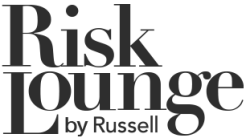The low frequency of losses in aviation, combined with technical, operational, and legal advances, means that adjusted burn cost methods for rating and analysing aviation do not often provide an accurate indication of future losses. Here Mat Maddocks discusses how a simulation approach to loss modelling can be used by underwriters to meet all of their underwriting risk management needs.
Burn Cost Methods
In general burn cost methods are not suited to lines of business where losses are infrequent and policy limits are relatively large. Statistically speaking the results of any analysis are not reliable and even sophisticated methods of curve fitting distributions to adjusted historic losses often do not adequately predict or price for catastrophic events. There are also a number of added complications when it comes to adjusting historic aviation losses which are unique to this class of business.
Claims Inflation
Traditional compound inflation methods applied to past liability claims are not appropriate for aviation losses as there are many factors which these methods cannot adequately cope with. Aviation liability claims are governed by national and international acts and conventions which can be subject to step-changes rather than being linked to any normal measures such example wage inflation. In addition to this damages in some jurisdictions are decided by a jury, which when dealing with potentially emotive claims such as aviation, can depend on the particular circumstances of the specific claim rather than being representative of the average awards.
The allocation of liability between involved parties in past losses is also not representative of future claims as products liability can be subject to national legislation and constantly evolving legal arguments. In this respect we can find varying changes in awards over time for different sectors (operators, manufacturers, service providers, etc) of the aerospace market.
Exposure Adjustment
Adjusting historic claims for exposure changes, to calculate burn rates, is also difficult as changes can impact frequency and severity separately, for example a decrease in the number of flights, but with a shift from smaller to larger aircraft, could decrease the frequency of losses but increase the claims cost (from a combination of higher valued aircraft and increased number of passenger claims). Also for an industry that has not been around long enough for loss activity to stabilise we have seen exposure growth more than offset by declining loss rates in almost all territories. This is the result of constant improvements in technology, operational procedures, and pilot training – all of which are difficult to determine going forward if we are basing our view on past events.
Simulation Approach
Many of the issues that we have raised above can be dealt with by using simulation methodology to create an event set that can then be used for pricing and other risk management analysis. The advantage of this approach is that we are simulating a large number of events based on current exposure, allowing us to explore a much greater range of loss scenarios than a purely historical analysis. This approach which would be based on current exposures, would take account of actual fleets, seating configurations, passenger numbers, and route structures. To these we then apply our parameters for various risk factors such as liability awards for different routes, the frequency of losses in different territories, the relative safety of various aircraft and engine types, the quality of risk management for the operators, and how we believe liability will be allocated between different parties. Although the parameterisation of these is not always straightforward we have the benefit of being able to use past losses when we feel this is appropriate, but with the advantage of being able to override this with our view of the future risk when they are not. Over time the simulation methodology can adapt and develop to capture new and emerging factors that underwriters feel are important to pricing aviation business – and within a sophisticated system we can test these assumptions against actual claims experience to refine our approach.
Risk Management
Once a simulation approach to pricing has been developed there are many other types of analysis that can be done using the same event set, giving consistency of approach. Portfolio modelling can be used to inform reserving, business planning, forecasting, and to produce accurate underwriting risk distributions for capital modelling. Outwards reinsurance can be priced and analysed on the same basis as the inwards portfolio, enabling net position to be optimised.
Conclusion
Although we can learn a lot about studying past aviation losses the complexity and special characteristics of this class mean these losses are often not a good guide to the future, even when we apply sophisticated techniques for adjusting exposure, inflating claims, and fitting curves to standard frequency and severity distributions. For comprehensive risk management for aviation we really need to employ a ground-up simulation approach to generating loss scenarios, which with the correct use of data and parameterisation, should be able to answer any questions that an underwriter or risk manager has.






